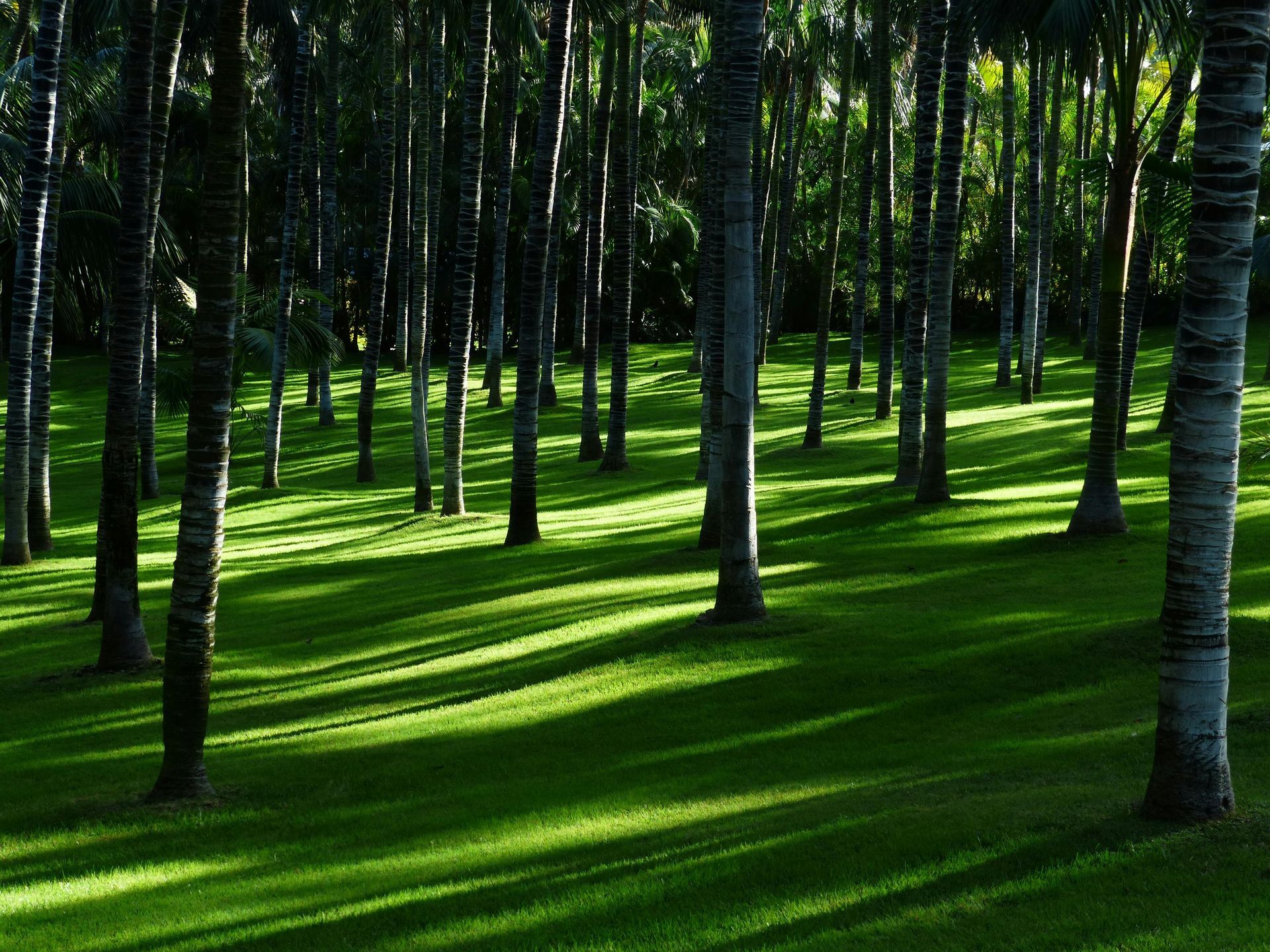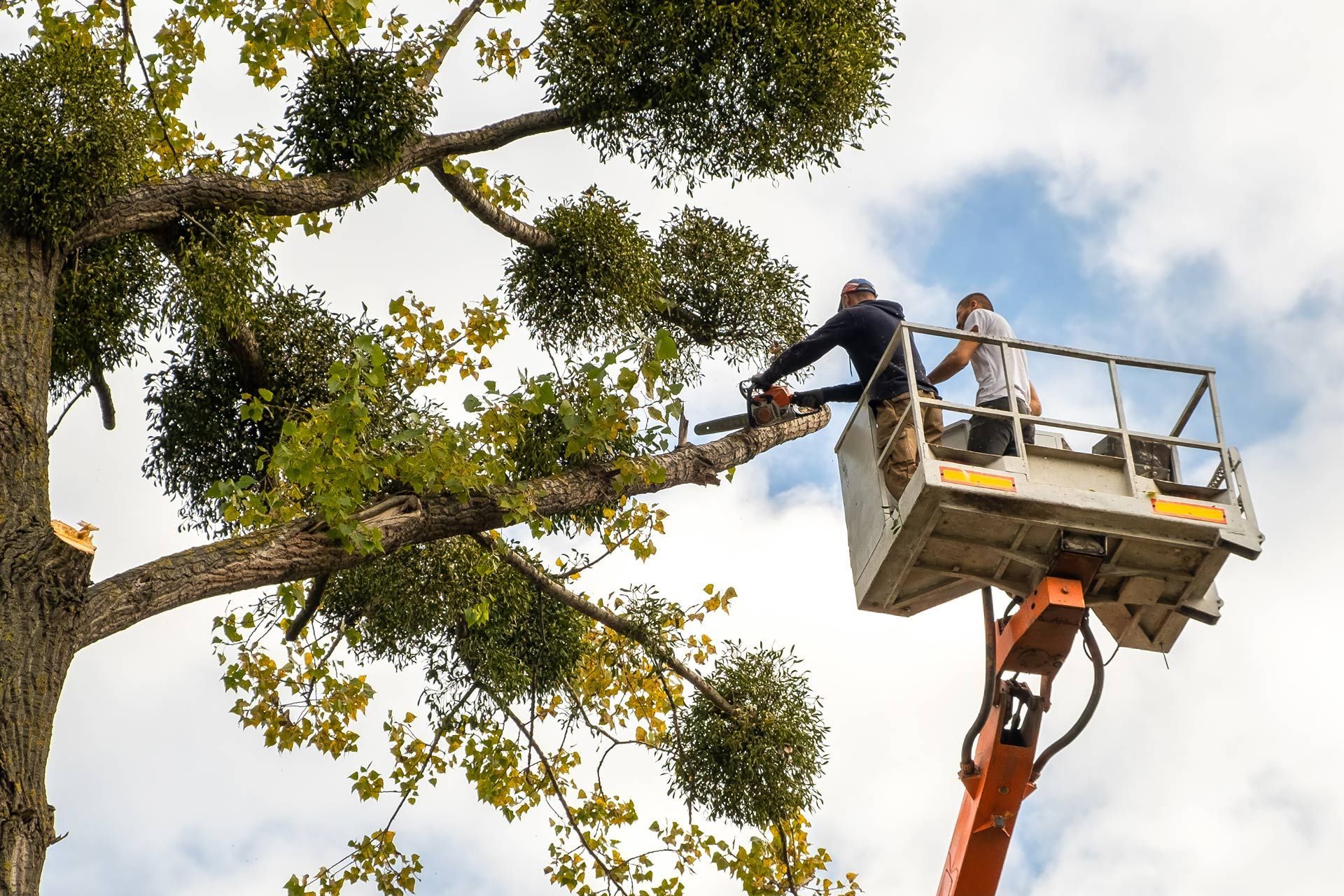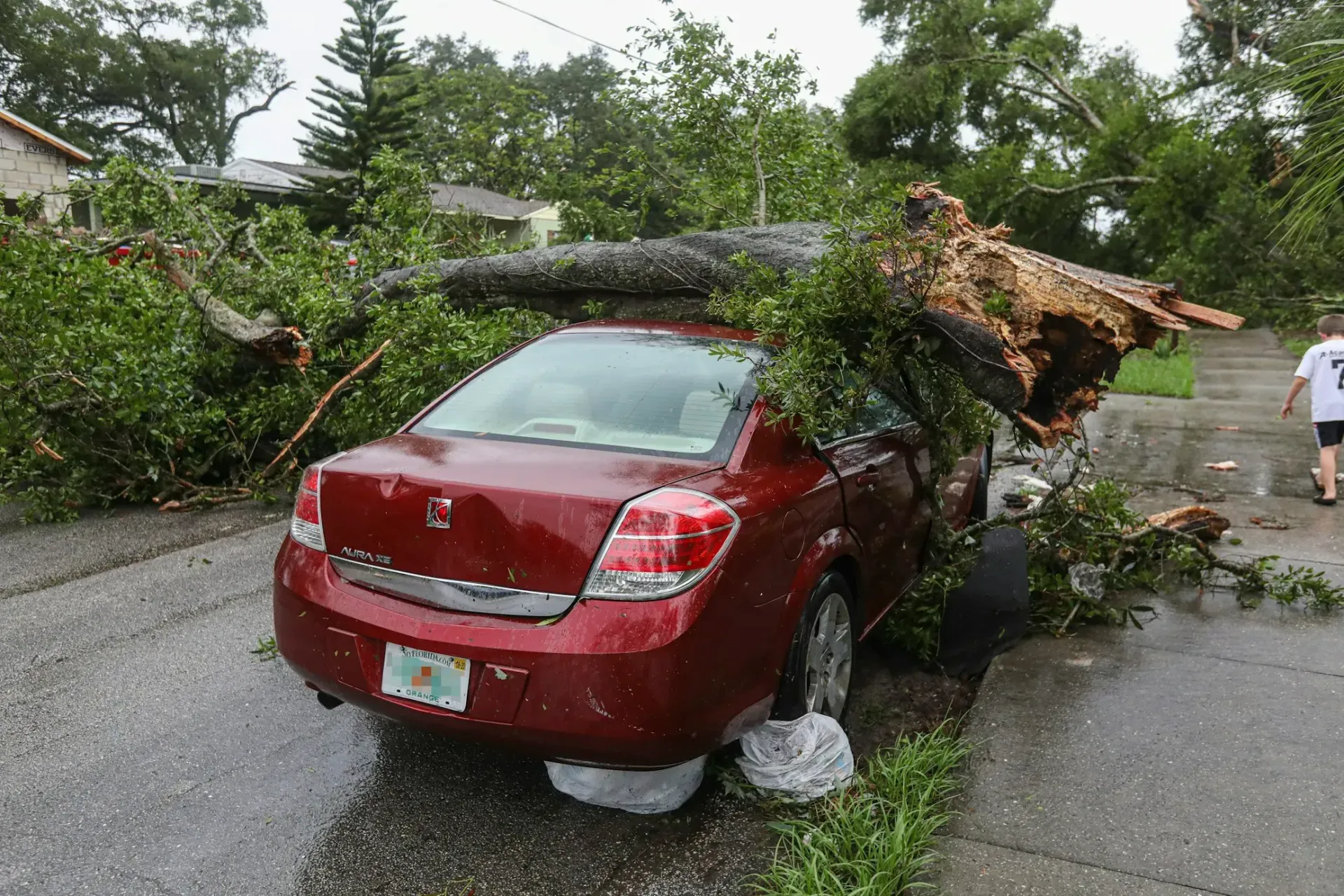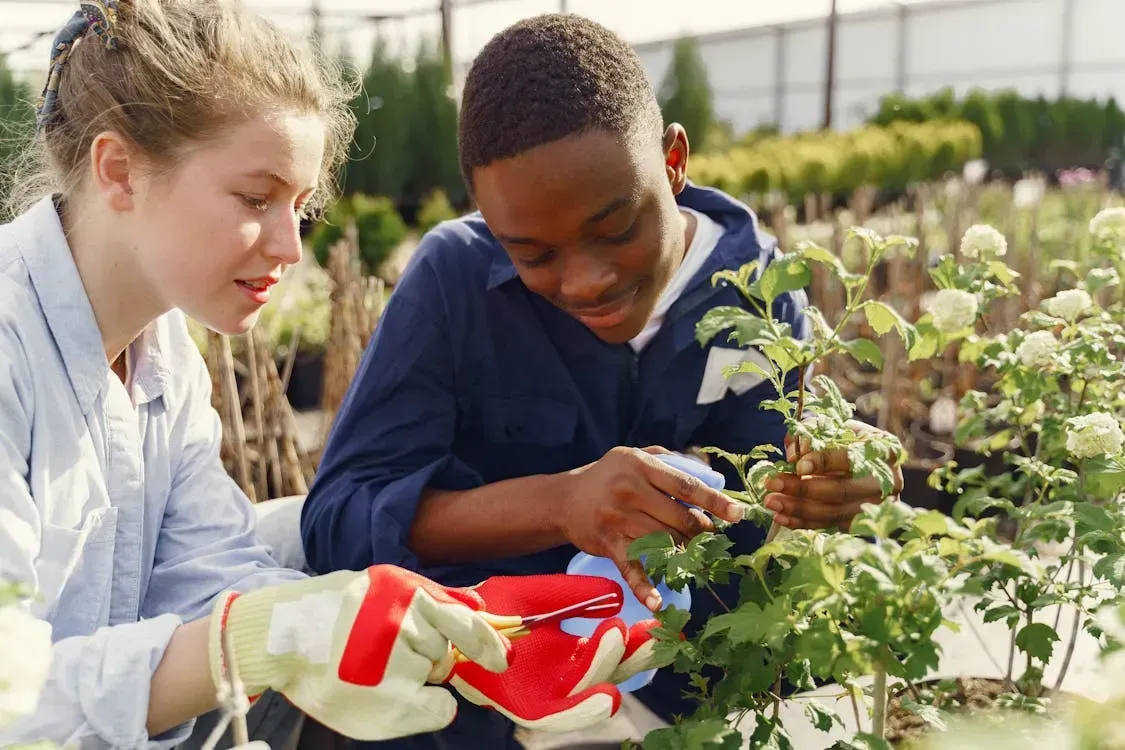Expert Tree Services Tips: How Often Should You Trim Trees?
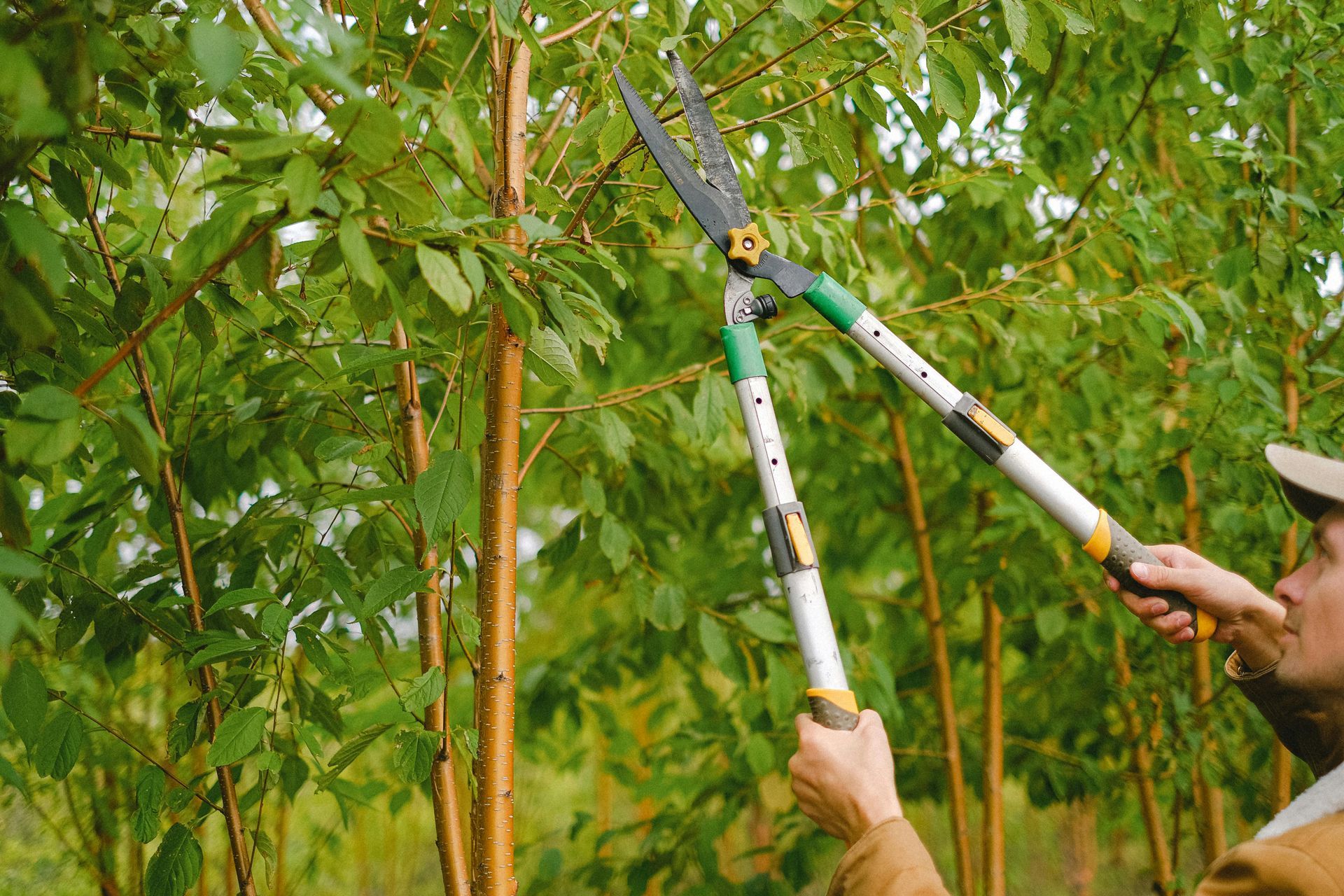
How Often Should You Trim Trees? Expert Insights on Tree Care
Trimming trees is key to keeping them healthy, safe, and looking great. Although it might seem straightforward, knowing when and how often to trim makes a huge difference. In this guide, we’ll cover everything you need to know about tree trimming—from why it matters to the best times of year to tackle the job. Let’s dig into the essentials for keeping your trees strong and beautiful all year long.
Why Do Trees Need to be Trimmed?
Tree trimming isn’t just about looks—it plays a crucial role in your tree’s health and safety. Regular trimming keeps trees in shape, prevents problems, and enhances their growth. Let’s break down some of the main reasons why tree trimming is essential.
Benefits of Tree Trimming for Growth and Health
Trimming helps trees grow stronger by removing dead or damaged branches, which allows the tree to focus its energy on healthier growth. When you trim away weak or excess branches, you also improve air circulation and sunlight exposure, making it easier for the tree to thrive. This helps the tree stay vibrant and less prone to disease or decay over time.
How Tree Trimming Prevents Disease and Pest Infestation
Trees with crowded or dead branches are more likely to attract pests and diseases. When branches are too close together, they can trap moisture, creating an ideal environment for fungi and pests. By trimming regularly, you reduce the risk of infestations and diseases that can weaken or even kill a tree. Healthy trees are better equipped to resist environmental stresses, pests, and other hazards.
Improving Aesthetic Appeal and Safety with Tree Services
Trimmed trees look clean, balanced, and well-maintained. Beyond aesthetics, trimming also prevents branches from becoming hazards. Overgrown branches can block pathways, obstruct views, or even interfere with power lines. By keeping branches under control, you enhance the safety of your outdoor space while making it more visually appealing.
How Often You Should Trim Trees?
The frequency of tree trimming depends on several factors, including the type of tree, its age, and its health. While some trees benefit from annual trimming, others can go a bit longer between trims. Here’s what to consider when deciding how often to trim.
Factors Influencing Trimming Frequency
Different trees have different needs. Fast-growing trees, like willow or maple, may need more frequent trimming to maintain shape and health. Slower-growing trees, such as oak or pine, can go longer between trims. Factors like the tree’s location, exposure to elements, and any history of disease also play a role. Trees near power lines, buildings, or pathways may require more frequent trimming to ensure they remain safe and contained.
General Guidelines for Trimming Mature and Younger Trees
In general, younger trees benefit from more frequent, light pruning to help shape their growth. For young trees, aim for trimming every 2-3 years. Mature trees, on the other hand, can typically be trimmed every 3-5 years. These guidelines help keep trees healthy without over-pruning, which can stress them. Avoid trimming more than 25% of a tree’s foliage in a year, as too much removal can weaken the tree.
Signs That Indicate a Tree Needs to be Trimmed
Sometimes, a tree will show signs it needs trimming outside of your usual schedule. Watch for dead or broken branches, low-hanging limbs, or branches that crowd the center of the tree. If you notice a decline in the tree’s appearance—like sparse leaves or an increase in pests—it’s a good time to consider a trim. Another clear sign is if branches are too close to buildings or utility lines, which can create safety hazards.
What is the Best Time of Year to Trim Trees?
Timing matters when it comes to tree trimming. While you can trim trees at almost any time of year, some seasons are better than others to promote healthy growth and minimize stress. Here’s what to know about the ideal times for trimming.
Ideal Seasons for Tree Pruning and Trimming
Late winter to early spring is generally the best time to trim most trees. During this period, trees are in their dormant phase, making them less vulnerable to the stress of trimming. Additionally, trimming in these seasons allows trees to heal quickly when the growing season starts. Summer trimming can work well for removing weaker branches, while fall trimming is usually discouraged as it can lead to fungal growth.
Why Winter and Spring are Preferred for Trimming
Trimming during winter and early spring has several benefits. In winter, trees have shed their leaves, making it easier to see the tree’s structure and spot any problem branches. Since pests are less active in the colder months, there’s also a reduced risk of attracting insects or spreading diseases. Spring trimming, done just before buds start to open, promotes faster healing and sets the tree up for strong growth in the warmer months.
Understanding the Tree's Dormant Cycle
A tree’s dormant cycle is a natural period of rest, where it conserves energy and slows down its growth. Trimming during dormancy minimizes stress on the tree, as it doesn’t have to work hard to repair itself in colder conditions. This cycle is especially important for deciduous trees that shed their leaves, but it can also benefit evergreens. By aligning trimming with the dormant period, you support the tree’s natural growth cycle and improve its resilience.
How to Properly Prune a Tree?
Pruning trees may seem simple, but doing it right takes some knowledge and technique. Proper pruning promotes healthy growth, reduces risks, and improves the tree’s appearance. Here are some basic pruning techniques and common mistakes to avoid.
Basic Techniques for Pruning Different Tree Species
Different tree species benefit from different pruning methods. For instance, fruit trees generally need more intensive pruning to encourage fruit production, while ornamental trees require lighter, more aesthetic-focused trimming. Start by removing any dead, diseased, or damaged branches. Next, focus on thinning crowded branches to improve airflow. For trees with larger limbs, use a three-cut method: make the first cut on the underside of the branch, then a second cut further out to remove the branch, and finally, make a clean cut near the trunk to avoid tearing.
Common Mistakes to Avoid During Tree Pruning
Over-pruning is one of the biggest mistakes. Removing too much can stress the tree and inhibit its growth. Another common mistake is “topping” or cutting the top of the tree, which can lead to weak growth and a compromised structure. Avoid leaving stubs or cutting too close to the trunk, as this can make it harder for the tree to heal. Using dull or dirty tools can also introduce diseases to the tree, so always keep equipment sharp and clean.
When to Seek Help from a Professional Arborist
For larger trees or if you’re unsure about pruning techniques, it’s best to call a professional arborist. Arborists have the expertise to handle complex trimming safely and know how to shape trees without causing harm. If you’re dealing with tall trees, diseased branches, or anything near power lines, a professional can ensure the job is done safely and effectively.
When Should You Request a Free Tree Service Consultation?
Sometimes, it’s best to bring in a professional to assess your trees. A tree service consultation can help you understand the health of your trees, the type of care they need, and any potential risks they might pose. Here’s when it might be time to schedule a consultation.
Understanding the Importance of Professional Tree Services
Professional tree services go beyond basic trimming and pruning—they provide a thorough evaluation of your trees' health and structure. Certified arborists can identify diseases, pests, and structural issues that might not be obvious to the untrained eye. By consulting with a professional, you’re ensuring your trees are well-cared for, safe, and able to thrive over the long term.
Questions to Ask During a Tree Service Consultation
When you meet with a tree service professional, it helps to ask a few key questions. You might ask about the health of your trees, recommended trimming schedules, and any signs of disease or pest infestation. If you’re planning on planting new trees, ask which species are best suited for your area and what care they require. Don’t forget to inquire about their credentials and experience, as well as any insurance coverage they hold.
How to Find Reliable Tree Trimming Services in Your Area
To find a reliable tree service provider, start by looking for certified arborists or companies with positive reviews and strong reputations. Check if they’re licensed and insured, as this protects both you and the workers. You can also ask for recommendations from friends, neighbors, or local landscaping professionals. Reliable providers should be willing to answer your questions, offer a free consultation, and provide clear pricing information.
Conclusion
In conclusion, regular tree trimming and care play a crucial role in keeping your trees healthy, your property safe, and your outdoor space looking its best. Whether you’re looking to maintain your trees or need help with larger tasks, professional tree services can make a world of difference.
For homeowners and businesses in West Farmington, Solon, Warren, and Chagrin Falls, Troyer's Tree Service offers unmatched expertise and commitment to quality. Their skilled team provides comprehensive services, including tree removal, tree trimming, stump grinding, and lot clearing, each tailored to meet the unique needs of your landscape. From enhancing curb appeal to ensuring safety, they handle every project with precision and care.
Don’t leave the health of your trees to chance. Contact Troyer's Tree Service today to schedule a free consultation and discover how they can help transform and protect your outdoor space. Your trees—and your property—deserve the best care.
FAQs
How often should you prune trees?
Typically, trees should be trimmed every 1-5 years, depending on their type and growth rate. Consulting a certified arborist can help determine the best schedule for your specific trees.
Why is it important to prune trees regularly?
Regularly pruning trees helps remove dead or weak branches, reducing the risk of damage to property during bad weather. It also promotes healthy growth and can improve the overall appearance of the tree.
When is the best time to trim your trees?
The best time to prune your trees is usually during the dormant seasons, such as late fall or winter. However, fruit trees are typically pruned in late winter to early spring before new growth begins.
Can you trim evergreen trees every year?
Evergreen trees generally do not require annual trimming. It’s a good idea to trim them every 3-5 years to maintain their shape and health, but this can vary based on the specific type of evergreen.
What is the proper way to prune fruit trees?
Fruit trees should be pruned to remove dead, damaged, or weak branches, and to thin the crown to improve air circulation. Proper pruning encourages better fruit production and helps maintain tree health.
How does pruning affect mature trees?
Mature trees may not need as frequent pruning as younger trees. However, regular maintenance is crucial to remove dead limbs and prevent potential hazards, ensuring the tree remains healthy and stable.
Are there any trees that you should never trim?
Oak trees should generally not be pruned during the growing season, especially in spring and summer, to prevent oak wilt, a deadly disease. Always consult with a certified arborist for proper guidance.
How does tree trimming help with tree health?
Tree trimming can help by removing branches that are dead, diseased, or infested, which prevents the spread of disease and pests. It also allows more sunlight to reach the leaves and improves air circulation.
What should you consider before scheduling a tree pruning?
Before scheduling tree pruning, consider the tree species, age, and health, as well as the appropriate season for pruning. Consulting with a certified arborist can ensure that pruning cuts are made properly to promote tree health.


